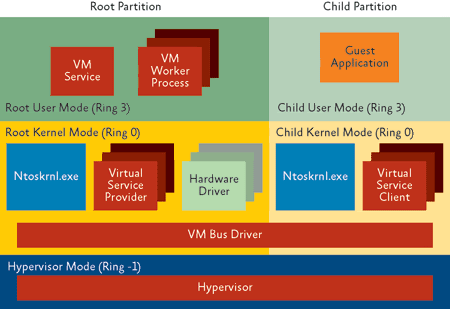sabregen
Fully [H]
- Joined
- Jun 6, 2005
- Messages
- 19,501
I'll keep this simple. I have a build that's slowly coming together (it's up and running, but I'm still missing a few pieces), and was wondering what everyone's thoughts were on running a workstation that's going to have the following config:
The real rub with that I don't know what OS to choose. I have been using Vista x64 for about a year and a half. I have had no issues with it, and like it very much. However, the inclusion of Hyper-V into Windows Server 2k8, and the way that 2k8 can grow/shrink storage volumes is intruiging. If I can run Server 2k8 in "workstation mode" and turn on services that are normally disabled, disable things I don't need, maintain Vista x64 driver compatibility, still play games, and use my apps...I think I'd like to head in that direction. Plus, it's a new OS for a new toy, and that, in and of itself, is enticing, for many reasons (shiny thing syndrome).
Who has real hands on time with both OS's, and who can help me with my quest on determining which would work better. Vista x64 for me, is tried and true, and I'd hate to shoot myself in the foot with Server 2k8, and have to reload again. Any help is appreciated. Thanks in advance.
ASUS KFN32-D SLI server board
2x Opteron HE8346 CPUs (Quad core 1.8's)
4x2GB Kingston PC2-5300 DDR2 ECC Reg (plan to go to 16GB shortly)
1x 74GB 2.5" SAS 10k boot (plans to go to 4 drive RAID-0 boot)
Plans to have 4x 2.5" 10k SAS "Scratch space" array
LSI 1068E PCI-E SAS controller
Onboard NvRAID 6port controller
6x WD 320AAKS in RAID-5 for data storage
Lite-On DVD burner
8800GTX 768MB
lower end 8xxx or 9xxx card for Physx
Emulex Lightpath 4Gb PCI-X FC HBA
About 500GB of FC attached storage for scratch space
I plan to run the following:
OS (undecided on VIsta x64 or Server 2k8 in "workstation mode")
VMWare Workstation (running at least 6 VMs)
Transcoding applications for HD content
MyMovies database content to serve HTPC downstairs running Vista
Any other general purpose applciations
Going to test Windows Home server as VM (got 3 free 120day trials from MS)
The real rub with that I don't know what OS to choose. I have been using Vista x64 for about a year and a half. I have had no issues with it, and like it very much. However, the inclusion of Hyper-V into Windows Server 2k8, and the way that 2k8 can grow/shrink storage volumes is intruiging. If I can run Server 2k8 in "workstation mode" and turn on services that are normally disabled, disable things I don't need, maintain Vista x64 driver compatibility, still play games, and use my apps...I think I'd like to head in that direction. Plus, it's a new OS for a new toy, and that, in and of itself, is enticing, for many reasons (shiny thing syndrome).
Who has real hands on time with both OS's, and who can help me with my quest on determining which would work better. Vista x64 for me, is tried and true, and I'd hate to shoot myself in the foot with Server 2k8, and have to reload again. Any help is appreciated. Thanks in advance.
![[H]ard|Forum](/styles/hardforum/xenforo/logo_dark.png)
